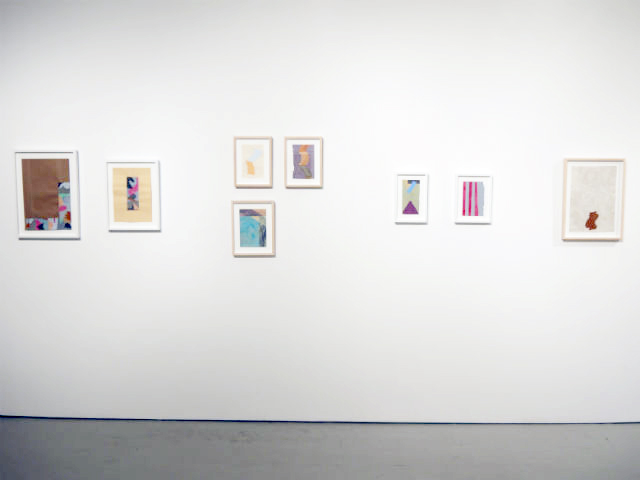Originally published in Hyperallergic. â—Šâ—Š
Rawson Projects is a miraculously bright spot in the neighborhood of Greenpoint, where many first-floor businesses are still in repair after Hurricane Sandy. Inside the gallery, Ben Berlow’s show of new drawings seems timely and thoughtful in its intimacy and sympathy for weathered materials.
Each of the show’s seventeen untitled pieces is realized on a sample drawn from Berlow’s accumulated paper stock, which includes a diverse range of repurposed paper bags, book pages, press releases from other art shows, and even the envelopes they sometimes come in. Before he began to think of drawing, Berlow hoarded paper he gathered in his day-to-day routine — in the way we can imagine Robert Rauschenberg walking the streets of Paris, amassing the objects for his Combines — with the intention of using it for journaling. A chance encounter with another artist inspired Berlow to make his first drawing on a brown sheet using a can of old enamel paint. Then, he attacked the countless more sheets he stashed in piles around his apartment.
In a way now characteristic of his work, Berlow applies marks that trace and articulate the paper’s distinguishing properties of texture, color, folds, and tears. Berlow’s art is perhaps best described as a meditation on the possibilities of mark-making, and the assorted personalities of paper. Pieces from his 2011 exhibition at Rawson Projects posited the idea that thumbprints could constitute both drawing and printmaking. Other past works have elevated the actions of burning, ripping, dripping, and folding paper to that of the exalted status of drawing and painting.
This new body of work, however, varies subtly from its predecessors in that Berlow begins to create forms and shapes independently from those already offered by the paper. In the interview included with the show’s press release, Berlow says that in making these, “I can’t remember what I was feeling or what I thought I was doing other than making a figure or shape that I wanted to look at.†For me, this was most visible in the first two pieces on the left gallery wall upon entry, in which Berlow traced rectangles into the corner and the center of two sheets of paper before filling them with free-flowing, curvilinear forms in a controlled palette of recurring colors. Another duo of drawings made on the reverse side of book pages feature hatches of thin ink lines in which the composition is built up around other marks on the page rather than the forms suggested by the page alone.

The effectiveness of Berlow’s work has always been its introspective quality, first regarding the materials and now the mind of the artist. Berlow made all of the drawings in this show on a table, which suggests the scale and the acute focus of each piece. Rawson Projects has been sensitive to the intimate nature of these works, providing them with unobtrusive frames and hanging them in gentle groupings that mirror forms found in the drawings. These works are the products of patient labor and require a patient pace to take in.
James Morrill, a co-founder of Rawson Projects who has known Berlow for over six years, pointed me to a suite of four works with a repeating pattern of blue triangles and drew my attention to the use of semi-transparent layers of wash. He called these new works “more painterly†in their search for new possibilities of form, gesture, and tone beyond the immediate qualities of his material. “This show really demonstrates that his practice is expanding,†Morrill said while we looked at a small work with a sliver of blue painter’s tape and wondered about the future possibility, perhaps, of collage.
Images courtesy of Rawson Projects and the artist.